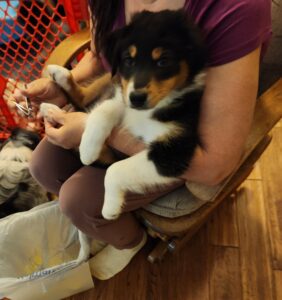Is your dog left or right-pawed? It’s not as easy to tell with a dog because they don’t hold a fork to eat or a pen to write. But you might be surprised to learn that dogs, like people, often have a preferred paw. Since a dog’s brain is organized similarly to ours, with two specialized sides, they can also show “handedness,” or what scientists call “laterality.”
Do Most Dogs Prefer One Paw?
Most humans are right-handed—only about 10% use their left hand. But dogs are different. There’s a much more even mix of right-pawed and left-pawed dogs. Some dogs don’t favor one paw at all and use both equally. These dogs are called “ambilateral,” which is similar to being ambidextrous in humans. The exact numbers of right-pawed, left-pawed, and ambilateral dogs depend on how researchers test them.
How Scientists Determine Paw Preference
There are a few common ways to see which paw a dog prefers:
1. The Kong Test
In this test, a dog is given a food-stuffed Kong toy. To eat the food inside, he has to hold the toy steady. Researchers count how many times he uses his left, right, or both paws. This helps them figure out which paw he prefers. Studies using this test usually find an even number of right-pawed, left-pawed, and ambilateral dogs.
2. The First-Stepping Test
This test looks at which paw a dog moves first when stepping forward from a standing position. Unlike the Kong Test, it doesn’t involve food motivation. The results of this test often show that more dogs favor their right paw.
3. The Food Bowl Test
Researchers place two food bowls at an angle—one to the left and one to the right. The dog can eat from both, but his first choice in most trials helps determine his paw preference. This test often finds that over half of dogs are ambilateral, while the rest are split fairly evenly between right and left paw use.
Does Paw Preference Affect Behavior?
Just like in humans, paw preference is linked to brain activity. The left side of the brain controls the right side of the body and vice versa. Since each side of the brain handles different emotions, laterality might play a role in a dog’s personality.
Some studies suggest that:
Ambilateral dogs tend to be slightly less aggressive toward strangers.
Left-pawed dogs may be more cautious or defensive.
Right-pawed dogs are more successful in guide dog training programs.
Of course, many factors shape a dog’s behavior, including training, past experiences, and health. While paw preference might offer some clues, it’s not the only thing that influences personality.
How to Find Out Your Dog’s Paw Preference
Want to know if your dog is a righty or a lefty? You can try these simple tests at home:
Kong Test: Give your dog a food-filled Kong and see which paw he uses to hold it.
First-Stepping Test: Watch which paw he moves first when stepping forward from a standing position.
Food Bowl Test: Place two bowls at an angle and track which one he chooses first.
Other Observations: Notice which paw he uses to scratch himself or which leg a male dog lifts when urinating. You can also hold a treat in a closed fist and see which paw he taps first.
For the best results, repeat the test at least 50 times to find a pattern.
Final Thoughts
Whether your dog is right-pawed, left-pawed, or ambilateral, learning about his natural preferences can be fun and useful. If you’re teaching tricks like a high-five or wave, knowing his dominant paw can help. But more than that, understanding paw preference gives you a deeper appreciation of how your dog interacts with the world. Try a few tests and see what you discover!








